


MAY 2024




MAY 2024
Operated in support of the Kenya Wildlife Service, Sheldrick Wildlife Trust's Aerial Unit monitors for illegal activity from the skies and offers rapid response assistance in anti-poaching operations, human-wildlife con�ict, veterinary treatments, orphan rescues, and all manner of �eld emergencies.
This report details Aerial Unit activities for May 2024
27,678
170 Hours �own:
Kilometres �own:
20,768
Areas patrolled:
Tsavo
Several poaching incidents were recorded in May, marking an uptick as the dry season started to set in. Teams discovered a large harbour, two shooting platforms, and three shooting blinds, most of which were not recent. All the above were destroyed, along with a variety of tools and equipment found in the shooting blinds and harbour
A number of veterinary cases were also assisted by the Aerial Unit, all elephants. Two bull elephants were sighted initially during �xed wing aerial patrols, one of which was later treated for multiple suspected spear wounds and given a good prognosis Another large bull elephant received a third follow-up treatment for an arrow wound, showing further improvement. After some effort, two small bone fragments were discovered, which had remained in the wound and possibly contributed to a slow recovery. He is expected to make a full recovery now.
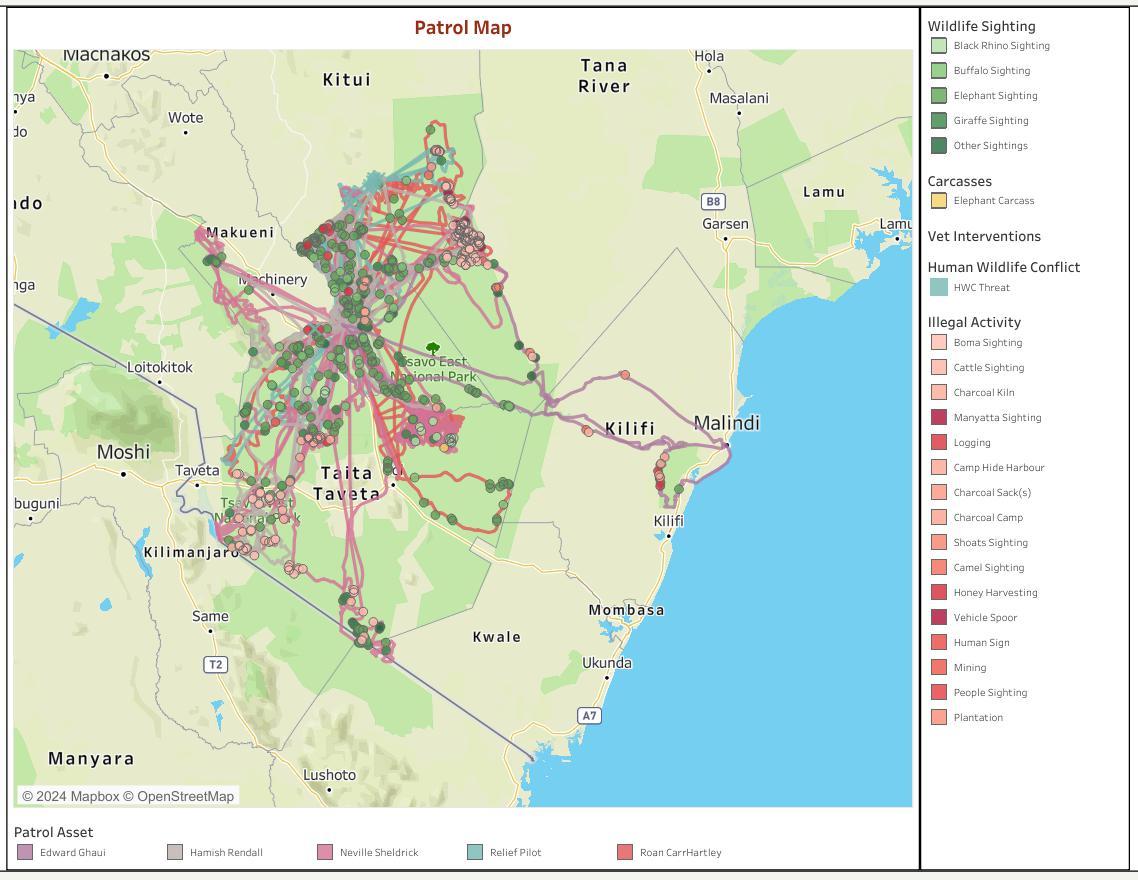
Another bull was located by �xed wing, having �rst been spotted by tourists in Tsavo East, with what appeared to be a large abscess on his abdomen. Once darted and examined, it was determined that the wound was in fact an irritated and infected tumour Unfortunately, nothing can be done to remove a tumour from an elephant in the wild; however, the vet was able to clean the wound atop the tumour and administer antibiotics to clear the infection The tumour itself is expected to be a lifelong condition.
Finally, a female elephant calf of around four years of age was discovered in the Chyulu Hills by rangers with a severe snare injury. She was later located by �xed-wing, while a helicopter assisted in keeping her protective mother and nearby bull away from the veterinary team while they worked quickly to try and treat the injury. Heartbreakingly, the calf was in a terrible state and too weak to survive even the treatment She passed away A cable snare had cut through to the bone, causing a severe infection
Despite several veterinary interventions, no poached elephant carcasses were discovered in May. One old carcass of an adult bull elephant was sighted, who had died of natural causes His tusks were retrieved by KWS for safekeeping

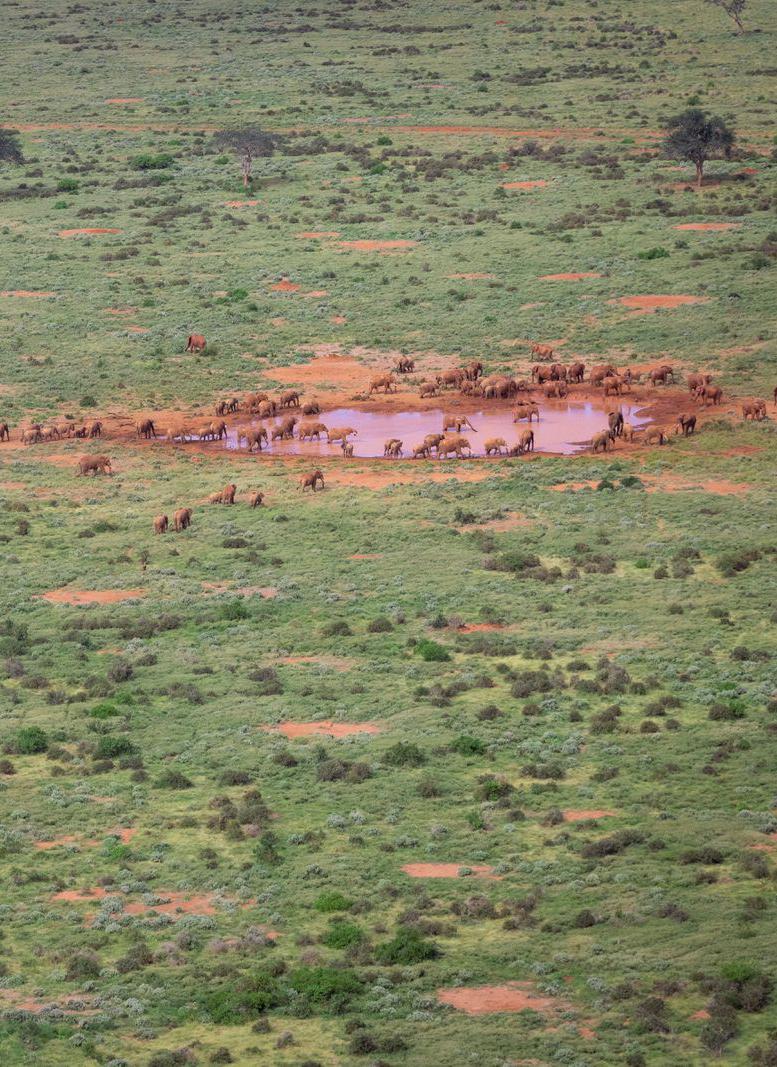
The livestock situation in the Tsavos continues to ebb and �ow. Whilst the situation in both Parks was generally good, there was a relatively large in�ux of livestock in the northern sector of Tsavo East, as well as a smaller in�ux into the southen sector of the park Progress was made in pushing both out; however, a signi�cant percentage of the livestock has remained within the park in Tsavo East. KWS continues to tackle the problem
The team dedicated several hours to Human-Elephant Con�ict in May, in one instance pushing approximately �fty elephants away from community settlements and back towards the park The same group was then monitored over several days to make sure they did not return.
Closer to Kaluku, a group of three elephants that have been scheduled for translocation for several weeks were �nally moved They had refused all previous attempts to be persuaded through the fence on foot The operation involved a KWS/SWT Mobile Vet team as well as a backhoe, crane truck, and a tractor with a specialised trailer. Aerial support included �xed-wing aircraft to assist in locating the elephants and a helicopter to dart the three individuals and help guide them to the ground team Once darted, all three were loaded onto the crane truck and trailer and moved a short distance into the park. Earlier, in the same area, a group of seven bull elephant were successfully pushed through a dropped section of the fence with the helicopter.
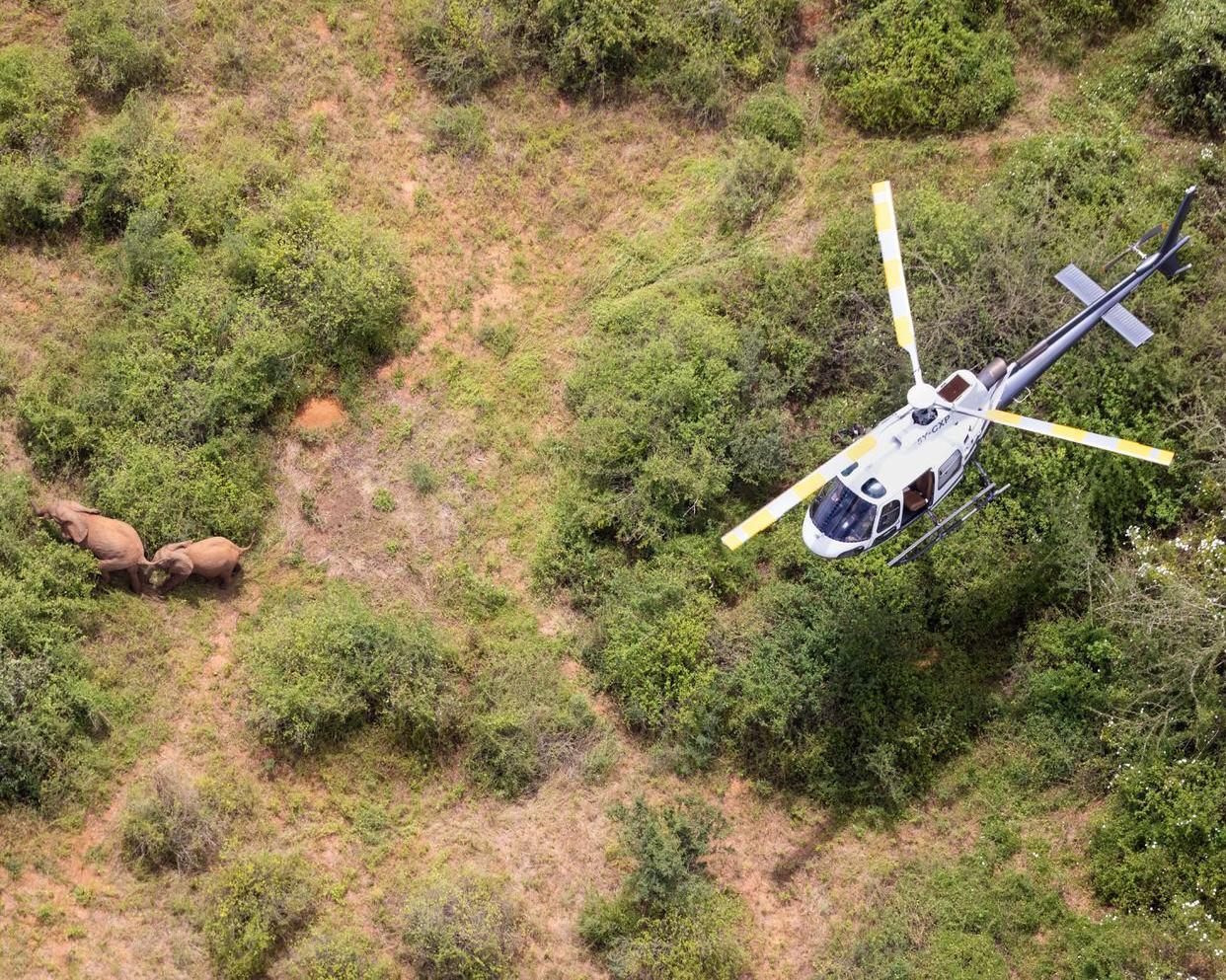
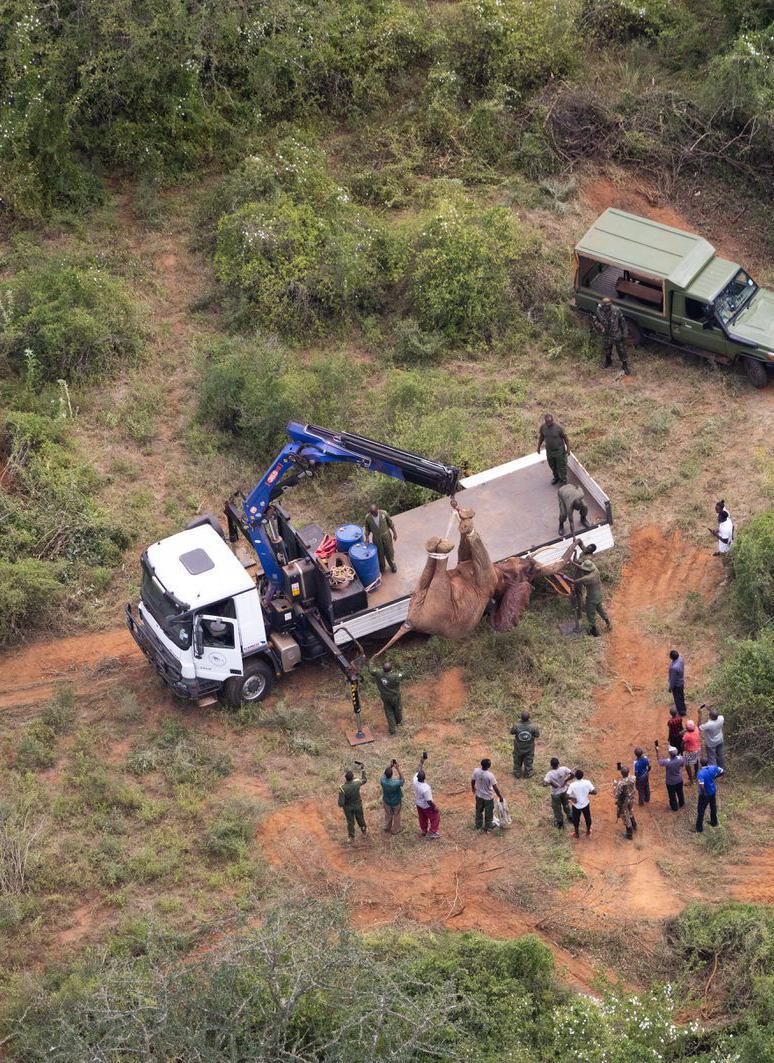
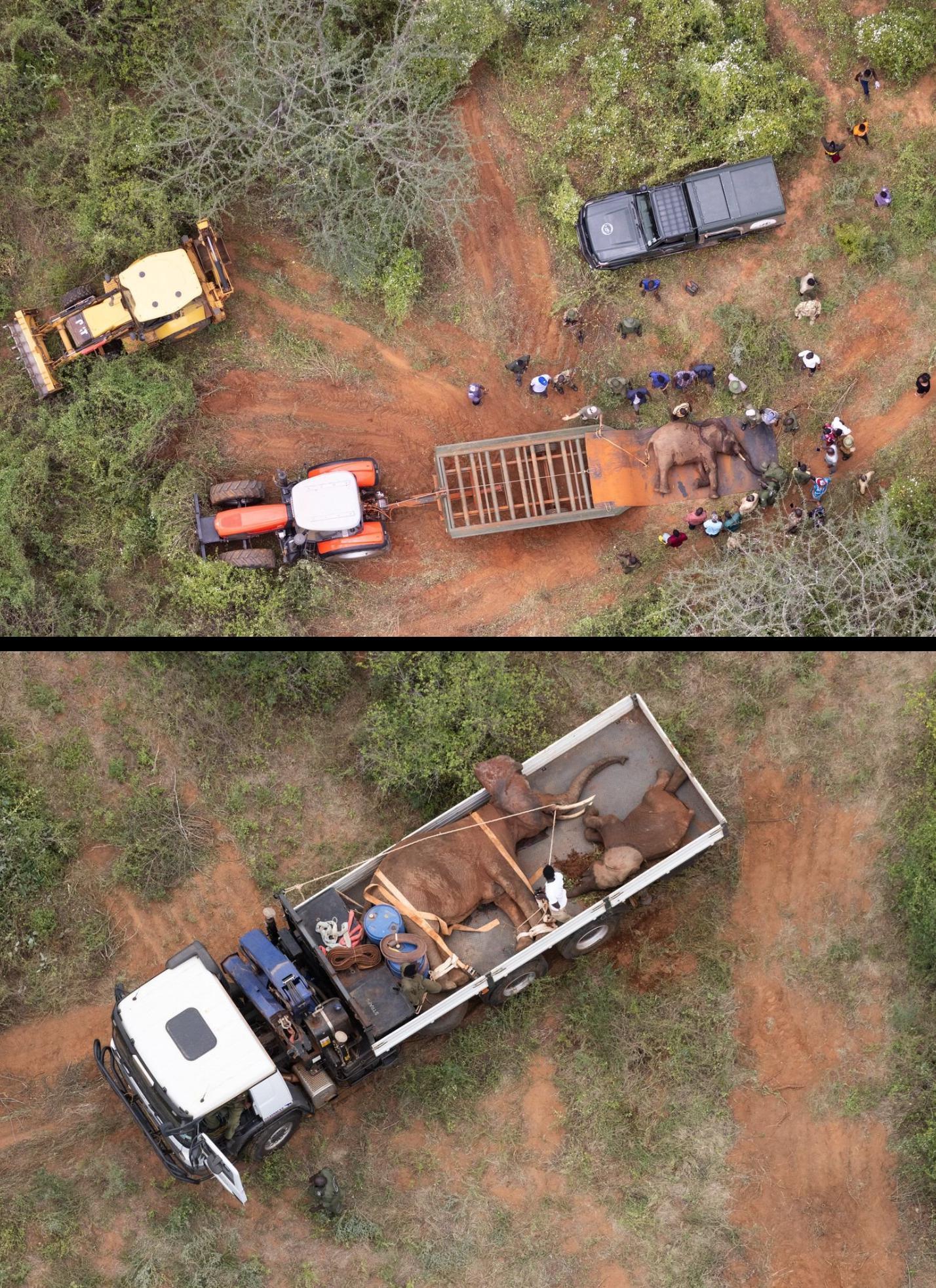
Charcoal production was mostly limited to areas outside of the park, namely South Kitui National Reserve as well as Galana, Kulalu, and Kishushe Ranches. One charcoal kiln was found and destroyed in Tsavo East. On Kishushe and South Kitui, with help from the helicopter, four arrests of charcoal burners were made Several camps and equipment, such as motorbikes, were destroyed
During one routine aerial patrol, fresh mining activity was observed, later leading to the arrest of two suspects by one of our ground teams On another patrol, our helicopter pilot made a routine landing at a dry water pan Upon landing,, the rangers and SWT/KWS Canine Unit handlers quickly discovered human footprints. Moments later the dog picked up a scent. With the dog following tracks on the ground and the helicopter airborne again, four suspects soon broke cover and began running One of the four was arrested by the team on the ground and suspected to have been engaged in illegal honey harvesting Although a relatively minor offence, it is possible that the group intended to also poach for bushmeat.

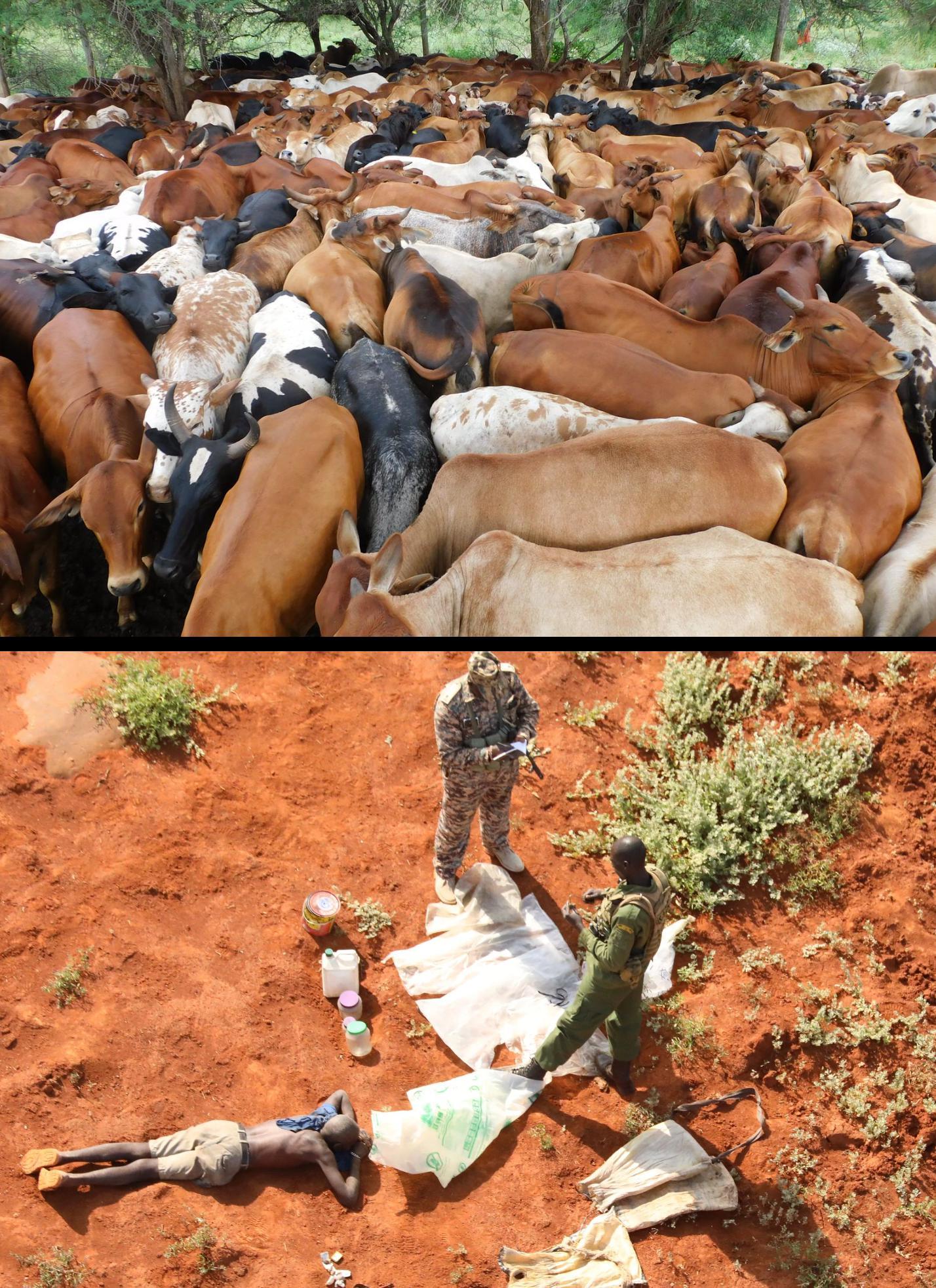
As far as callouts, one of our pilots responded to a request to search for a missing KPLC vehicle that had failed to check in after a planned inspection of transmission lines. The broken-down vehicle was eventually discovered along a road many miles from cell phone signal Upon seeing the aircraft, the driver collapsed in relief, having spent the night in the wild
Although �re season has not of�cially begun, two �res set deliberately in Tsavo West were sighted by a pilot on patrol in the area Multiple teams from SWT, KWS, and Wildlife Works responded and were able to put out the �ames successfully. It is suspected the �res were lit by illegal herders attempting to improve grazing conditions, although the �res were set unusually early in the dry season.
Highlight sightings included some especially large breeding herds of elephants, as well as the usual leopard and wild dogs, who have returned in healthy numbers.
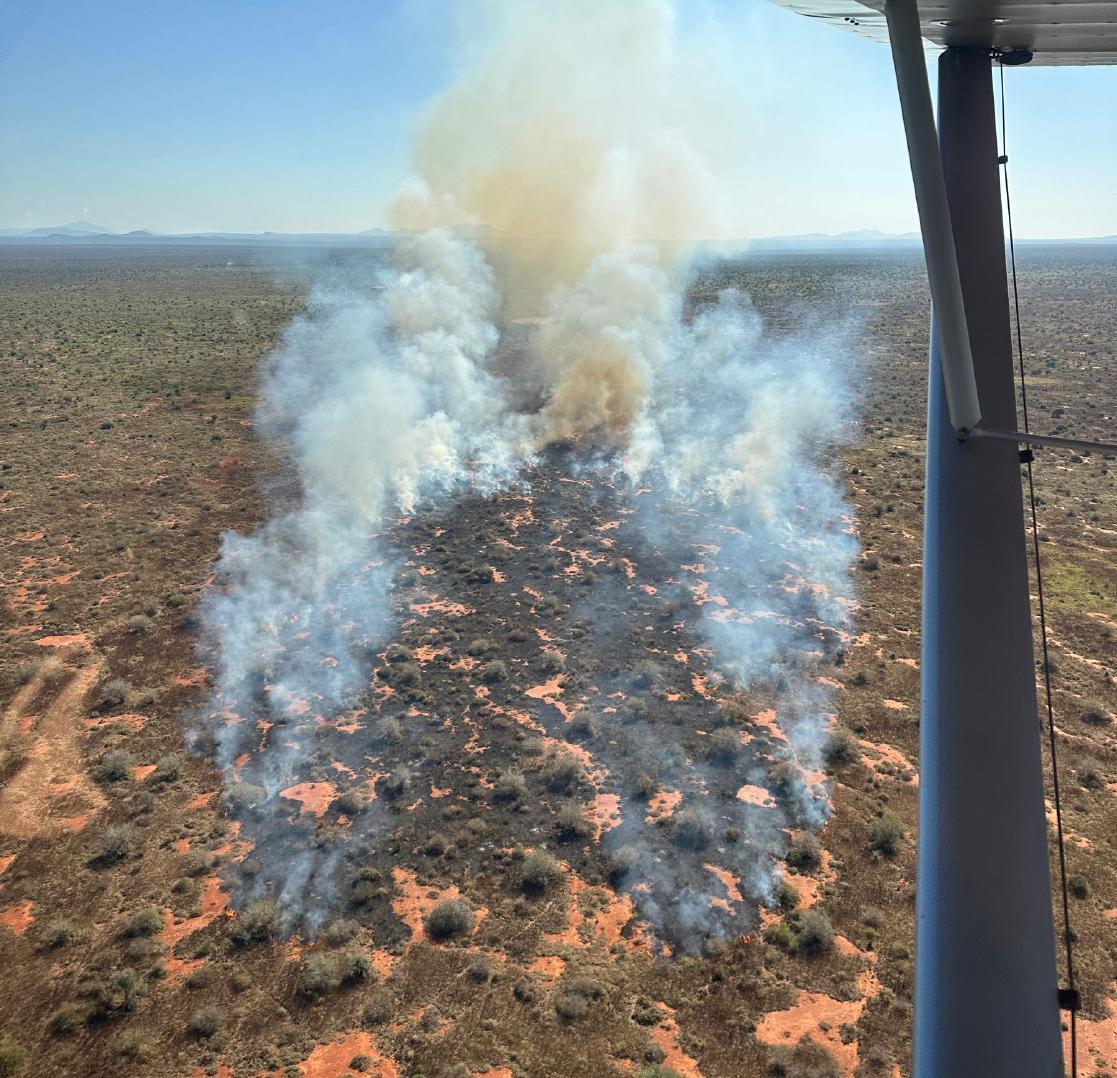


The Aerial Unit, as with all Sheldrick Wildlife Trust's conservation projects, is a donorfunded initiative Thank you to our global supporters, who help us secure Kenya's habitats for the future and make an impact in the �eld, each and every day